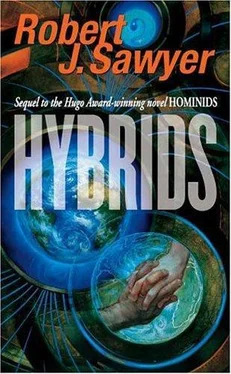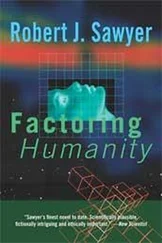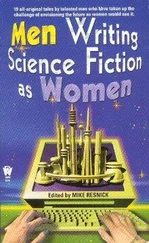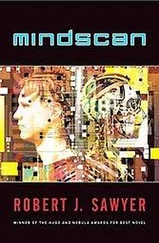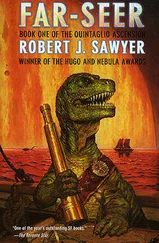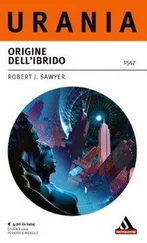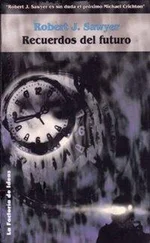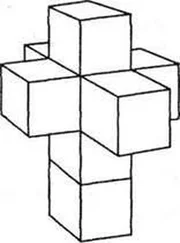Robert Sawyer - Hybrids
Здесь есть возможность читать онлайн «Robert Sawyer - Hybrids» весь текст электронной книги совершенно бесплатно (целиком полную версию без сокращений). В некоторых случаях можно слушать аудио, скачать через торрент в формате fb2 и присутствует краткое содержание. Жанр: Фантастика и фэнтези, на английском языке. Описание произведения, (предисловие) а так же отзывы посетителей доступны на портале библиотеки ЛибКат.
- Название:Hybrids
- Автор:
- Жанр:
- Год:неизвестен
- ISBN:нет данных
- Рейтинг книги:4 / 5. Голосов: 1
-
Избранное:Добавить в избранное
- Отзывы:
-
Ваша оценка:
- 80
- 1
- 2
- 3
- 4
- 5
Hybrids: краткое содержание, описание и аннотация
Предлагаем к чтению аннотацию, описание, краткое содержание или предисловие (зависит от того, что написал сам автор книги «Hybrids»). Если вы не нашли необходимую информацию о книге — напишите в комментариях, мы постараемся отыскать её.
Hybrids — читать онлайн бесплатно полную книгу (весь текст) целиком
Ниже представлен текст книги, разбитый по страницам. Система сохранения места последней прочитанной страницы, позволяет с удобством читать онлайн бесплатно книгу «Hybrids», без необходимости каждый раз заново искать на чём Вы остановились. Поставьте закладку, и сможете в любой момент перейти на страницу, на которой закончили чтение.
Интервал:
Закладка:
“Please!” said Ponter. “Let’s not fight.” He smiled at Mary, then at Adikor, but said nothing for a few moments. Then, in a tentative voice, he offered, “You know, we could all sleep together…”
“No!” said Adikor, and “No!” said Mary simultaneously. Good grief! thought Mary. A hominid menage a trois!
“I really think,” continued Mary, “that it makes sense for Ponter and me-”
“That’s gristle,” said Adikor. “It is obvious that-”
“My beloved,” said Ponter, but perhaps since mare was the Neanderthal word for “beloved,” he started again, using a different approach. “My two loves,” he said. “You know how deeply I care about each of you. But Adikor is right-under normal circumstances, I would be with him at this time of month.” He reached out and touched Adikor affectionately. “Mare, you must get used to this. It’s going to be a reality for the rest of my life.”
Mary looked out at the lake. This side was in shade, but sun was still falling on the far shore, a mile and a half off. There were four air-conditioning/heating units in the apartment, Mary knew-one at each end of each floor. She’d been turning on the fan on the one in the master bedroom before going to bed each night, so that the white noise would drown out the cacophony of birds that hailed the dawn. She supposed if she put it on high, it might keep her from hearing any noise coming from the other bedroom…
And Ponter was right. She did have to get used to this.
“All right,” she said, at last, closing her eyes. “But you guys have to make breakfast, then.”
Adikor took Ponter’s hand, and smiled at Mary. “Deal,” he said.
There was already a large safe in Jock’s office, built into the far wall; it had been the first renovation Jock had ordered when the Synergy Group had bought this old mansion. The safe, embedded in concrete, met Department of Defense guidelines for being both secure and fireproof. Jock kept the codon writer in it, only bringing it out for supervised study.
Jock sat at his desk. On one corner of it was the conversion box Lonwis had put together that would allow designs created on Jock’s PC to be downloaded into the codon writer. Jock was looking at one such design. His monitor-a seventeen-inch LCD, with a black bezel-was showing the notes and formulas Cornelius Ruskin had prepared. Of course, Jock had told Cornelius that his interest was purely defensive-wanting to see what a worst-case scenario would be if a device like the codon writer fell into the wrong hands.
Jock knew he should have turned this device over to the Pentagon-but those bastards would want to use it against humans. No, this was his opportunity-his one chance-and he had to seize it. Right now, early on in the contact between the two worlds, it would look like an accident: a nasty bug that had slipped through to the other side. Regrettable, but it would leave Eden uninhabited, and there’d only be one Homo sapiens casualty-Cornelius Ruskin, after he was no longer of any use.
Ruskin, of course, only knew what was necessary. For instance, as far as he, and most of the genetics community, knew, the natural reservoir for the Ebola virus-the place it lurked when not infecting humans-was unknown. But Jock was privy to things Ruskin was not: the U.S. government had isolated the reservoir back in 1998: Balaeniceps rex, the shoe-bill, a tall wading bird found in swamps in eastern tropical Africa. The information had been classified, lest an unfriendly power make use of it.
Ebola was an RNA virus whose genome had been completely sequenced, although, again, Ruskin wouldn’t know that; that information had also been classified, for the same reason. So, presumably as far as Ruskin was aware, the sequence Jock had asked him to manipulate was just a random viral string, not the actual genetic code of Ebola.
Ebola came in several strains, named for the locations at which they had been first identified. Ebola-Zaire was by far the most deadly, but it was only transmitted through bodily fluids. In contrast, Ebola-Reston, which doesn’t affect humans, is transmitted through the air. But Ruskin had had no trouble-purely as part of an exercise, of course-in programming the codon writer to swap a few genes, thereby producing a hybrid version that should have Ebola-Zaire’s virulence combined with Ebola-Reston’s ability for airborne transmission.
A few more tweaks cut the modified virus’s incubation time to one-tenth of what it had been in nature, and boosted the kill rate from ninety to better than ninety-nine percent. And one final tweak had changed the genetic markers that specified the virus’s natural reservoir…
The second part of the project had been harder, but Cornelius had taken to it like a dog to a bone; it’s amazing how much a $200,000 consulting fee can motivate someone.
The concept was simple enough on paper: keep the virus from being activated unless the host cell had certain characteristics. Fortunately, when Ambassador Tukana Prat brought ten of the most famous Neanderthals of all with her to the United Nations, they had freely shared much knowledge. One of them, Borl Kadas, had provided all the information that had been gleaned from the sequencing of the Neanderthal genome, which had been completed back in the year Jock knew as 1953. That database had provided the information needed to make sure the virus would kill only those it was supposed to kill.
Now only one problem remained: getting the virus over to the other side. At first, Jock had thought the simplest solution would be to infect himself with it-after all, it would have no effect on a hominid with twenty-three pairs of chromosomes. But the tuned-laser technology used for decontaminating people crossing between worlds would have easily zapped it from his body. Even diplomatic pouches were decontaminated, so simply storing a supply of the virus in one of them wouldn’t work, either.
No, he needed to get an aerosol bomb over in some sort of container that was opaque to the laser pulses used by the Neanderthals’ decontamination equipment. Jock himself had no idea what would do the trick, but his optics team-originally assembled to study the imaging technology in Companion implants, and handpicked from the best Bausch amp; Lomb, Kodak, and Xerox had to offer-would certainly be able to work it out, especially since the tuned-laser technology was also one of those the Neanderthals had freely shared with Homo sapiens.
Jock picked up the phone on his desk, and dialed an internal extension. “Hello, Kevin,” he said. “It’s Jock. Would you, Frank, and Lilly please come down to my office? I’ve got a little job for you…”
Mary found a simple short-term solution to the problem of working in the same building as Cornelius Ruskin. She would come in late in the day and work on into the evening; Cornelius would leave shortly after she arrived-or, if she was lucky, even before she got in.
Ponter and Adikor came in from Bristol Harbour Village with Mary; they had no way to get around except for having her drive them. But they spent most of their time working on the quantum-computing project with Lonwis Trob, and often with Louise Benoit-although she kept more normal hours, and had already gone home today.
Mary was writing a report for Jock, detailing everything she’d learned from Lurt, Vissan, and others about Neanderthal genetics. The work simultaneously elated and depressed Mary: elated her because she’d learned so much, and depressed her because the Neanderthals were decades beyond her people in this area, meaning so much of the work she’d done in the past was hopelessly obsolete, and Massive footfalls-someone running down the corridor.
“Mare! Mare!”
Adikor had appeared in Mary’s doorway, his broad, round face terrified. “What is it?” Mary asked.
Читать дальшеИнтервал:
Закладка:
Похожие книги на «Hybrids»
Представляем Вашему вниманию похожие книги на «Hybrids» списком для выбора. Мы отобрали схожую по названию и смыслу литературу в надежде предоставить читателям больше вариантов отыскать новые, интересные, ещё непрочитанные произведения.
Обсуждение, отзывы о книге «Hybrids» и просто собственные мнения читателей. Оставьте ваши комментарии, напишите, что Вы думаете о произведении, его смысле или главных героях. Укажите что конкретно понравилось, а что нет, и почему Вы так считаете.
